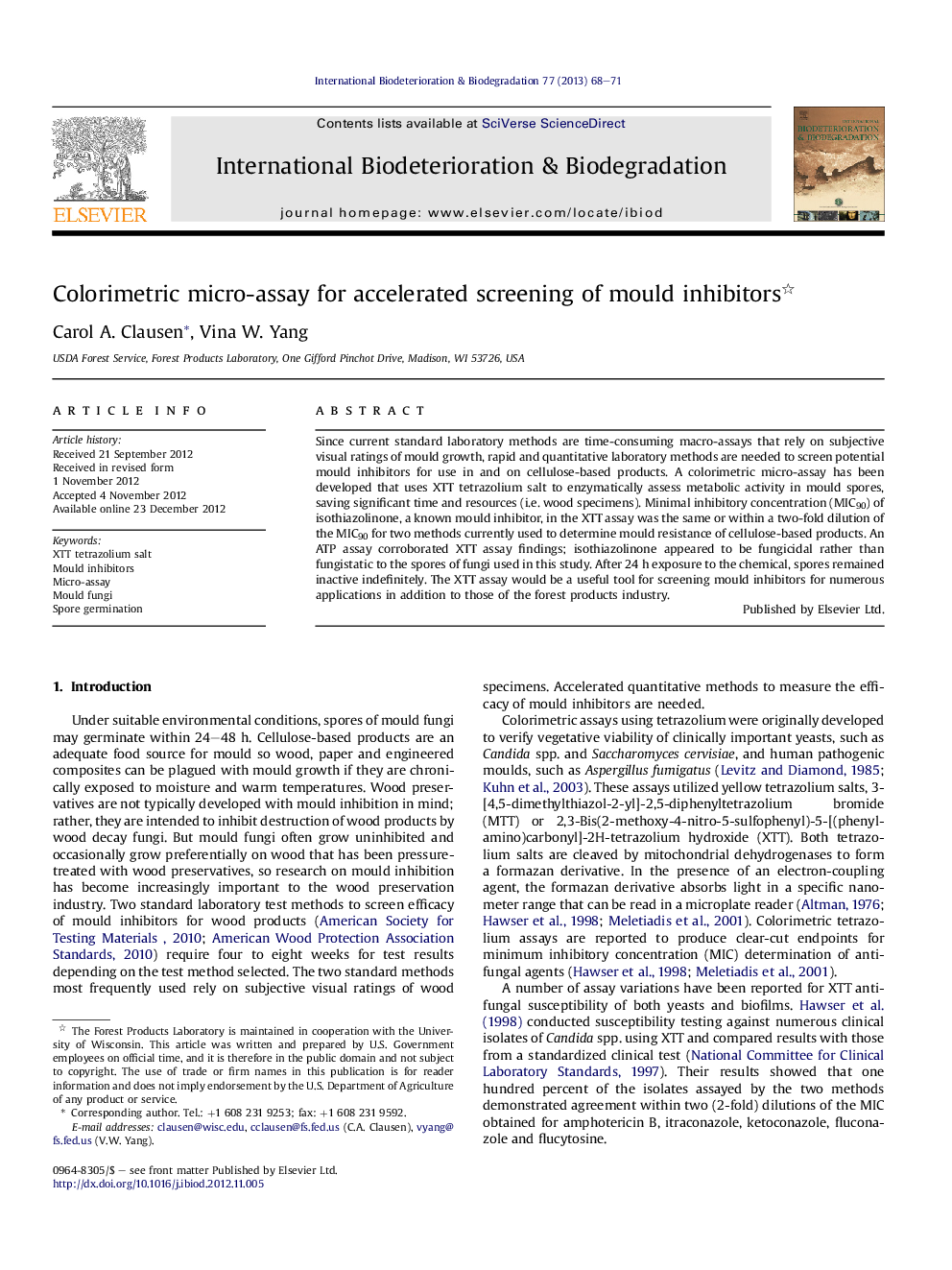| Article ID | Journal | Published Year | Pages | File Type |
|---|---|---|---|---|
| 4365044 | International Biodeterioration & Biodegradation | 2013 | 4 Pages |
Since current standard laboratory methods are time-consuming macro-assays that rely on subjective visual ratings of mould growth, rapid and quantitative laboratory methods are needed to screen potential mould inhibitors for use in and on cellulose-based products. A colorimetric micro-assay has been developed that uses XTT tetrazolium salt to enzymatically assess metabolic activity in mould spores, saving significant time and resources (i.e. wood specimens). Minimal inhibitory concentration (MIC90) of isothiazolinone, a known mould inhibitor, in the XTT assay was the same or within a two-fold dilution of the MIC90 for two methods currently used to determine mould resistance of cellulose-based products. An ATP assay corroborated XTT assay findings; isothiazolinone appeared to be fungicidal rather than fungistatic to the spores of fungi used in this study. After 24 h exposure to the chemical, spores remained inactive indefinitely. The XTT assay would be a useful tool for screening mould inhibitors for numerous applications in addition to those of the forest products industry.
Highlight► Novel screening method for mould inhibitors used on cellulose-based products. ► Rapid, quantitative micro-assay can replace time-consuming, subjective macro-assays. ► XTT assay results correlate with standardized test methods for resistance to mould.
